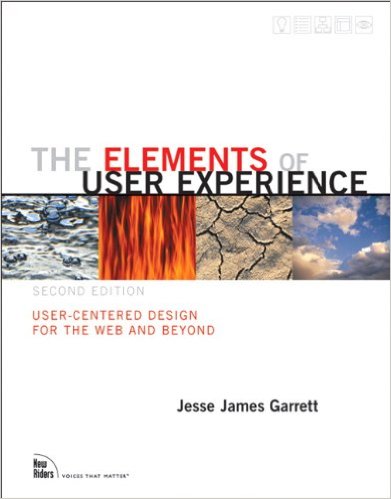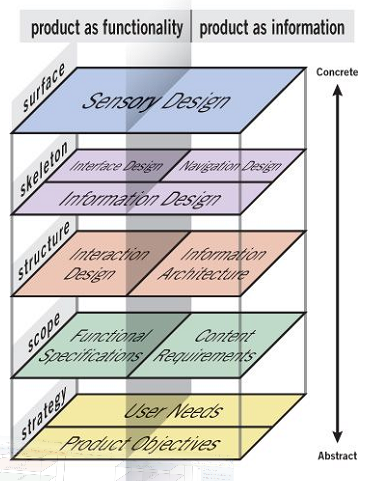The Elements of User Experience

Where does Information Architecture begin and end? It’s a question that I’ve been struggling with. There are so many impacts into user experience, visual design, navigation, etc. I tend to think of Information Architecture as the overall framework or structure. To me IA is the overarching thing under which many other disciplines fit. However, Jesse James Garrett sees the problem differently in The Elements of User Experience: User-Centered Design for the Web and Beyond. The book walks through his model for how he believes user centered design should work. The heart of this is a diagram showing five planes (or levels):

The book effectively walks through each of these levels and explains the relationship to the prior level – and the other concepts on the same level. So we move from a high-level strategy of what we want to scoping a project then defining its structure and so on. The book makes the point – effectively – that you need to focus on the bottom levels before moving up on the higher levels. This is pretty consistent with other things which build like change management. However, the good news here is that by exposing the linkages between the levels Garrett helps to provide arguments why the previous levels are important.
In general I struggle with user experience (UX) initiatives. Despite how much I know that a pretty interface is easier to use. (There’s research to support this.) I still struggle with the black and white definition of right and wrong that some visual designers try to use for things which aren’t quite so black and white and the insistence that an approach is right when there’s been no testing to support that perspective. So I was somewhat concerned about this book – however, I found that the book kept to the key goals of improving efficiency and allowing the users to get their job done and didn’t spend an inordinate amount of time about why changing from blue to purple would make people feel more powerful.
Because of the need to cover a breadth of topics the details can be a bit fuzzy at times. For instance, you’ll find much better coverage of wayfinding in Ambient Findability: What We Find Changes Who We Become and Information Architecture: Blueprints for the Web but the coverage here gets you the basic concept so you can dig into more later.
All-in-all, this is a good place to start to learn about Information Architecture – because it’s a good overview of Information Architecture and the related disciplines. Give The Elements of User Experience a read if you have time.
